Subscription Stories #1
Af Niels Vestergaard
I met with Louise Kingo in our office in Copenhagen for a talk about her business The Closet Collective, which seeks to consume clothing more sustainably with a focus on the sharing economy. And naturally, it’s a subscription.
The interview was held in our Living Room where we found the space for Louise’s daughter to play around while we talked. Right now, Louise and her husband take turns bringing their daughter to work while scouting locations, having meetings, and being interviewed by me.
Welcome to the first edition of Subscription Stories, where we talk with subscription businesses who have started from scratch about which challenges that are especially characteristic for subscription entrepreneurs.
First off, I have to ask you the obligatory question: What’s your favorite subscription, Louise?
“I actually think the Danish podcast service Podimo or the streaming service TV2 PLAY. I use TV2 PLAY to entertain the kids, because I think they have everything we need. And the user experience is very nice. On the other hand, I think I have to go with Podimo, because I use it all the time. I actually received an e-mail from them last night that said that I was one of their very first subscribers, when they started out. So yeah, I’m a fan!”
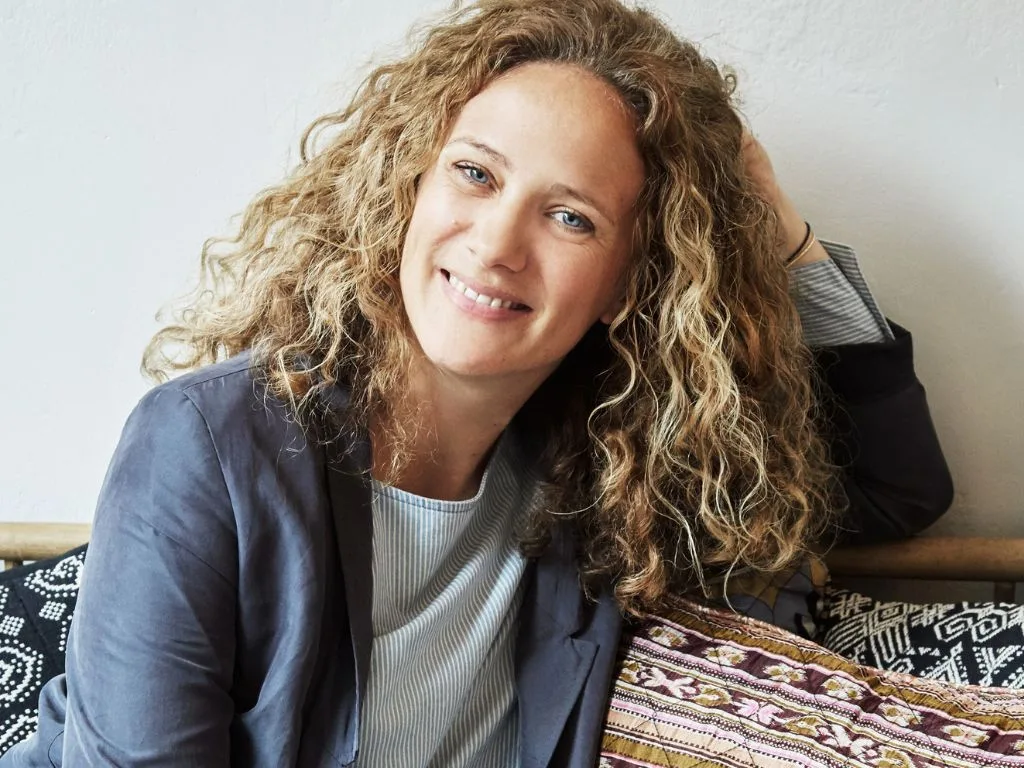
How did you come up with the idea for The Closet Collective? Did you see it as a business opportunity from the start or was it more an idea of a sharing concept?
“It was a business idea from the get-go. We had rented our house out on AirBnB and I had recently watched the movie “The True Cost” about textile producktion in Bangladesh and received an understanding of how much the clothing industry is actually polluting and what conditions that workers are facing. At that time, for me, clothing was a question of how much money I had to shop for and what was currently in style, I never thought about the pollution side. So I got to thinking, because I live in a small town and I know that many shops are actually fighting for survival there.
This had me thinking that if you create a subscription that could change our clothing habits, we should be able to consume more efficiently. And if this was to succeed, I had to make people commit. We might start from zero, but in contrary of traditional clothing stores, I can talk and communicate with my members on a regular basis. And I don’t have the big passion for clothes, it was definitely the opportunity to change behaviours and do something about something that was actually a problem.”
“There were many years where I tested concepts and I couldn’t really get people hooked on this sharing idea. I ended up selling one of my stores to my current partner Lene, who bought the store on a franchise basis. Then I went on vacation for two weeks without opening my computer and when I finally opened it, there had been a surge of new members. And this was simply because Lene had started sharing the journey on Instagram at a time where everyone was just posting, you know, ‘all the pretty stuff’. So, a lot of women started identifying with the concept and understand what we were trying to do. And then – we saw growth!”
And the idea has always been to be available outside of the large cities?
“YES! Initially, the thought was that everyone should have access to a sustainable concept. I live in Fyn, so I opened my first store in Odense, because I saw it as a challenge. It can be a challenge to open something in Odense, as opposed to larger cities like Aarhus and Copenhagen. So we start it all up and I end up going on maternity leave and find a substitute that knows a little about subscriptions and who has worked with Jonas Juul from Subscrybe.
Until then, we had only grown organically, but then we attended a subscription academy at your offices and found help to operate our subscription business a little more effectively and gain a better understanding of the principles that you need to have an eye on. And that’s where I gained respect for the complexity of running a subscription business.
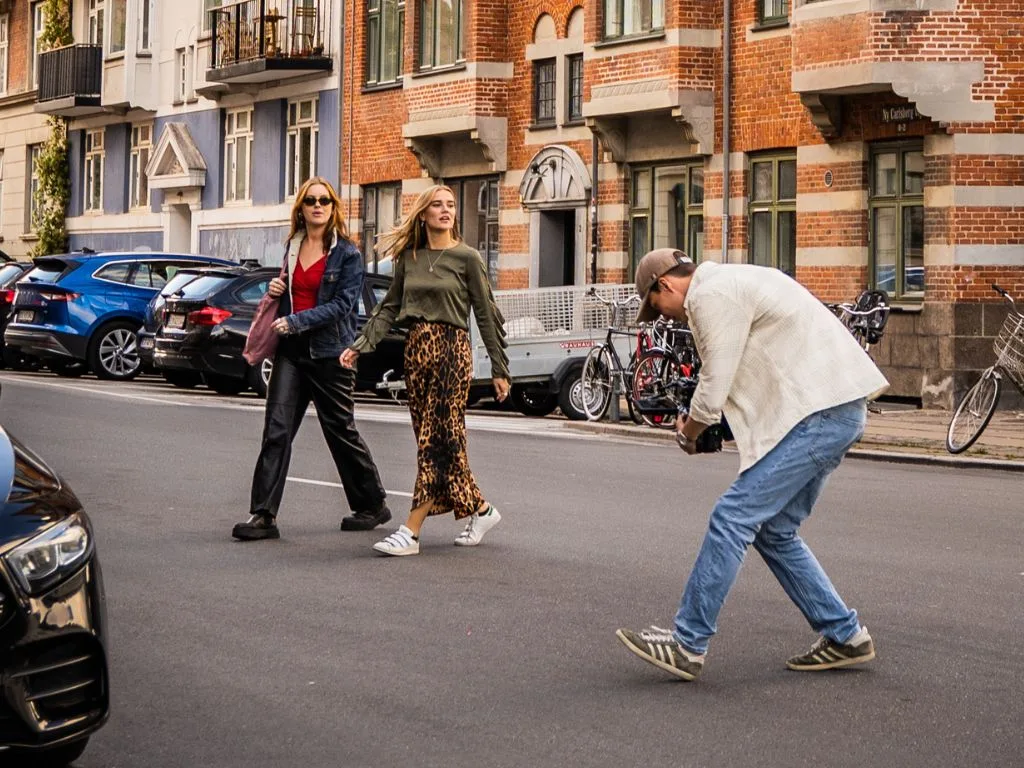
Pictures from the photoshoot with Subscription Growth
This opened my eyes to online channels like Paid Social, Influencer Marketing and so on, and I thought that it made more sense to be visible there than, you know, attending clothing markets and meeting customers out there. It seemed a little old-fashioned. And then, Jonas introduced me to your new Subscription Growth division.
We had tried a marketing agency before, but we didn’t really talk a lot about the best way to present our concept, so it was a great experience to sit with Jonas and Thomas from Growth and go through all the parts of our value offer and talk about how you present it in the best way. Especially here, it has been a huge advantage to be able to talk about subscription KPIs when planning marketing, so you reach a synergy effect.
Initially, I felt like one agency was as good as the other, but when we started using Growth, it all made more sense and I couldn’t hide my excitement that we had seemingly entered a club where we work together around the same goal. I’m actually starting to feel that Subscription Growth is part of our team, because we work together all the time”.
If we should get a little technical, what do you think separates you in the existing subscription market. What are your primary loyalty drivers?
“During and after COVID, we’ve managed to create a very strong community. This is a combination of having eight physical stores where members meet and especially the constant development of our app to create the best experience. We try to solve all our problems digitally instead of with personnel. And this has actually proved to not have a negative effect on our community – we believe that members should always be able to handle things themselves. For example, we’ve done this by adding digital locks on shops which allow us to extend opening hours. Also, when you sign up, you receive a little video that introduces you to the concept.
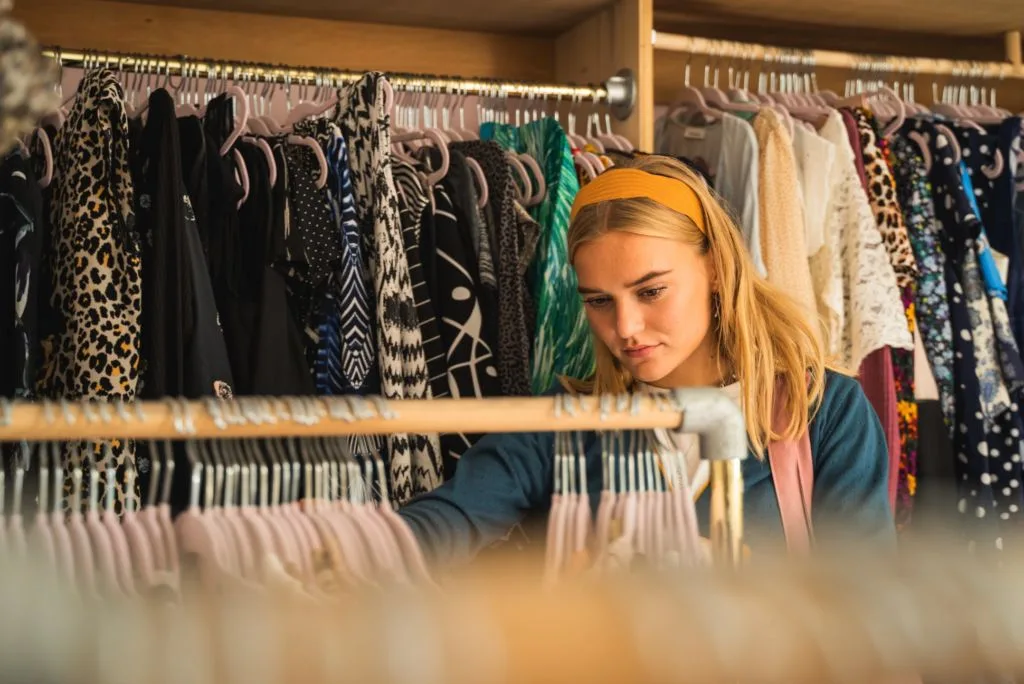
And even though it’s digital, we focus on meeting the customer ‘face-to-face’ – it might be on video, but it’s still so much stronger than just a generic e-mail. And your Growth team has opened my eyes to the fact that meeting digitally in a video is just as good – if not even better for young consumers – as meeting an employee in the shop.
With The Closet Collective you can choose another style every day.
“Another special focus which we’ve prioritized is great customer service, because when we onboard and meet the customer online it’s extremely important that they feel they can get help. We made the decision to outsource customer service to an agency meaning that we actually have customer service from 7 to 17 every day. This works really well and they have a database with all of our knowledge. We also feel that we are free of all the frustrations that can arise from in-house customer service where you might take criticism more to heart or feel overwhelmed.”
How have you experienced this period with a focus on inflation and the fact that many subscription businesses have lost customers.
“Actually, we’ve been able to maintain loyalty, however, we did feel it. We’ve even introduced self-service and even had a price increase, so it’s been a huge task to communicate that correctly. We have a lot of young members and millennials are very hard to retain, because they have a limited budget and cut subscriptions first. But that’s exactly why we’ve increased focus on what you are saving, when you share clothes. Even though we’ve raised the monthly price to 189 DKK, it is still way less than most people spend on clothing every month.”
What is the big challenge in getting people to understand a concept like this?
“It’s all about putting a focus on the fact that we’ve all had a significant overconsumption on clothing in the past. We all have clothes that just stay in the closet, never to be used again and that’s something that we’re trying to change at The Closet Collective. And much of it is about creating a habit. You know, it’s also tough to get to the gym and work out at first, but when you get in the habit, you’re always ready to go! The same goes for meal boxes, which has helped my family to cut back on meat and be able to eat vegetarian a couple of times a week.”
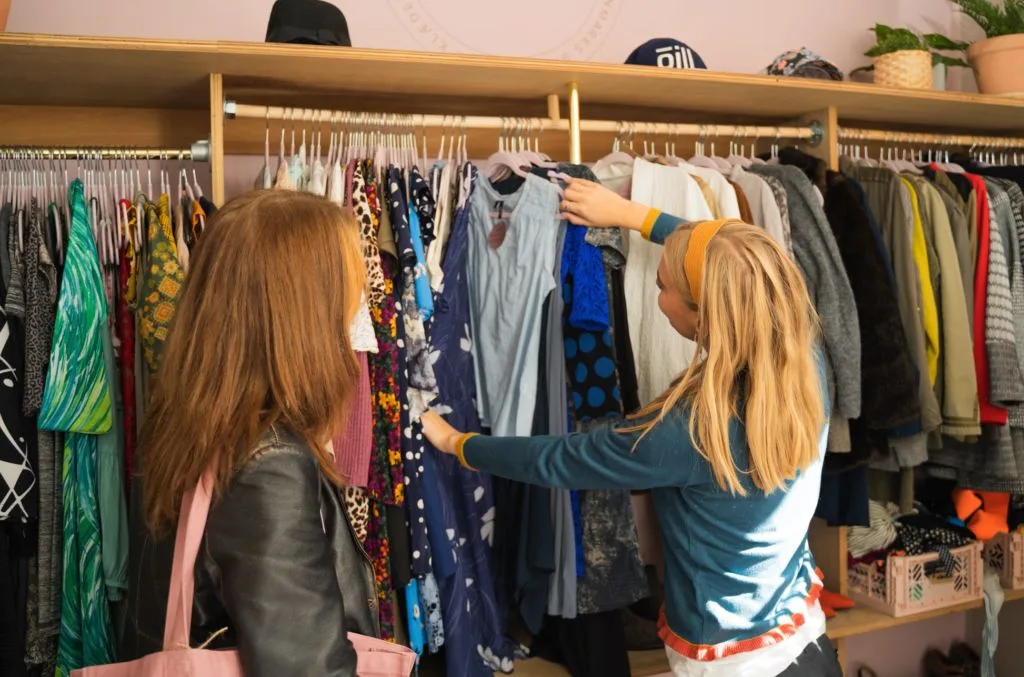
At The Closet Collective you can exchange as much clothes as you like, for 189 DKK a month.
So, we’re quite aware that it’s a long journey that we’re starting and behavioural change is really difficult. But that’s what we’re here for!
If we’re looking ten years into the future, how does The Closet Collective look?
“Well, first of all, the ambition is that we, together with our franchise partners and Subscrybe crack the code for acquisition, churn, the stores, self-service, the app and the online part. Because we need an online platform in the future. When all that is in place, we’re looking into a whole new situation and I’d like to talk with the fast fashion groups like Bestseller and Claire Group. These businesses are selling less and less in their physical stores – actually, both inside and outside the city. Fast fashion revenue is on a decline and I think that they will need concepts like ours in the future.
The vision of this project is to really move something and scale down overproduction in the clothings industry. The vision has never been to be a small, sustainable big city phenomenon. And when I sit with investors, I actually feel that we check a lot of the boxes. We are scaleable, we are sustainable, we are challenging the existing industry and we’re a subscription business. However, we still need to fine tune everything and we are still very small.
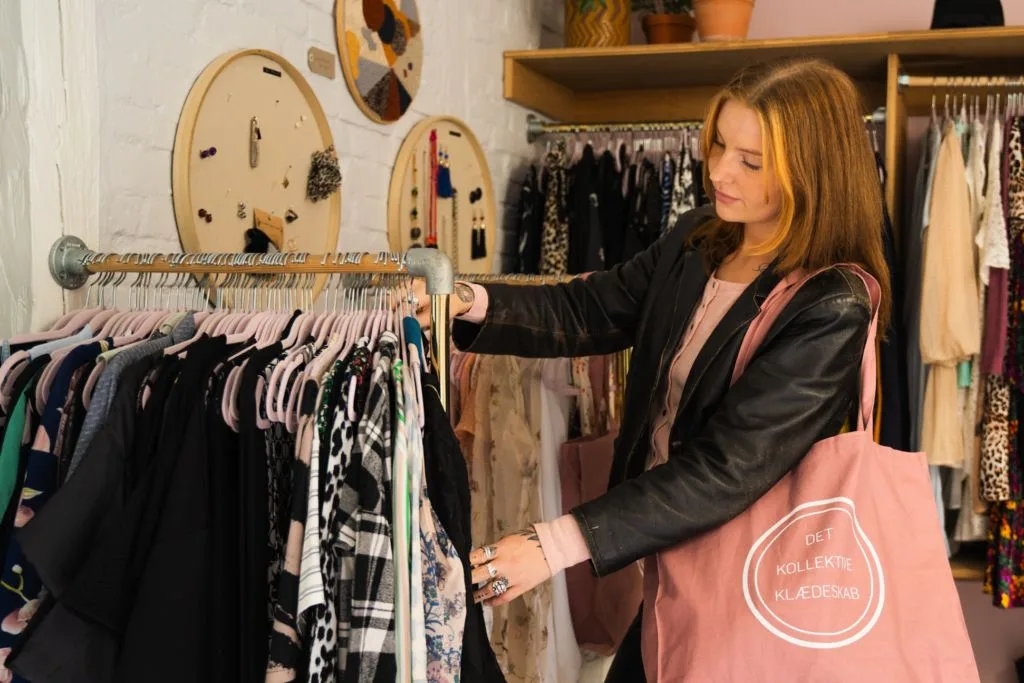
The Closet Collective now has eight locations in Denmark.
When I meet the small, sustainable brands out there, they probably think we are a bit too commercial. We are actually ready to enter a dialogue with Bestseller, because we believe that we can give their clothing a longer lifetime.
In the clothing industry, there is a huge focus on having a more responsible consumption, but it all ends up in disillusion. They are talking about buying 2-3 pieces of clothing every year and buy more sustainably and more expensively. But most of us are shopping a little here and there and it’s really an act of impulse. Also, there is a social aspect to shopping and as a family with children, you have kids who want something specific and are following a trend. We’re not gonna kill food waste right now either, but at least HelloFresh is doing something and they have a service that many families love! It’s convenient and it makes life easier for families with children, including my own!”
This interview actually came about because you read my article on Rent The Runway and I was complaining that there wasn’t a concept like this for men. But you actually know some reasons why these concepts aren’t targeting men yet, right?
“Well, yes, I think men just think very differently. To women there is something very social connected to shopping and I think it is very few men who actually enjoy visiting seven shops in an afternoon.
Also, men are very classical in their style and don’t jump from style to style like women do. Women clear out their closets on a regular basis, which is also part of our subscription, and men don’t even have that much clothes, so it doesn’t make sense for them to share like we do. A subscription might very well be the solution for men, but it needs to be within their personal style and not one where you ‘explore’ new styles.
Men are also very loyal to a few brands, they will buy from the same place as they did in the past. Many men use the same clothing from being 16 years old until they are grown men. If you really want to take advantage of The Closet Collective, you need to come by 3-4 times a month and I honestly think that would be a nightmare for most men. But I do really hope that there comes a day where we have something for you too, Niels. You are more than welcome!”
I think I can hear from you that I might one day get clothing on subscription, but it takes that we men are willing to change our behaviour and our spending habits. So that one might be on us!
Thank you so much for talking with me about starting a subscription business and the challenges that are specific to your industry!

